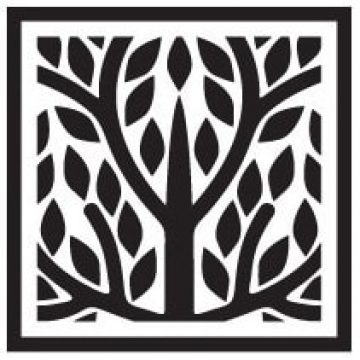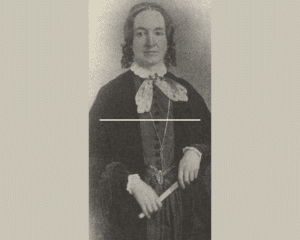One of our readers, Alyssa, emailed us her idea of how to approach this lesson. (Thank you, Alyssa!)
She writes:
When I’ve taught this lesson in the past, I usually do most of it straight—basically following the outline of the manual. Since I came from an all-girl family, I personally found most of the specific information about the roles and duties of each priesthood office to be rather eye-opening. I had never been taught that information very explicitly up until the time that I taught this lesson—which probably speaks a little bit to the gendered nature of instruction in the church. I think that women should be more fully informed about this information too, so that was one of the goals of my lesson. Women should know about the structure and organization of the priesthood.
The old Gospel Principles manual used to have a drawing of a church and had each of the priesthood offices making up the different “parts” of the church. I scanned that image, then I typed in the details about the roles and responsibilities of each office onto the image. I made a handout with this image on the first page and used it as the basic guide for my lesson. Here is a link to it.
Here’s where I do something different: after going through all the different offices of the priesthood, I then transition to the final section of the lesson by saying, “So that’s the organization of the priesthood on the earth, but if you’ll flip over to the back side of your handout…” On the reverse side of the handout, I put an image of a blank family pedigree chart. Pointing to the pedigree chart, I then say: “This is the organization of the kingdom of God both on the earth and in heaven: the family. This is how we will be organized in the celestial kingdom and this is why marriage in the temple is so central to Heavenly Father’s plan.”
I then have someone read D&C 131: 1-4. I then say: “So, in order to obtain the highest degree of the celestial kingdom, both a man and a woman must enter into the new and everlasting covenant of marriage. Even though a man holds the priesthood, he cannot enter into this order of the priesthood (the patriarchal priesthood) without his wife.
“So, as women we are very much a part of this priesthood organization. We are a crucial and integral part of this organization.
“Looking back on the front page of this handout, it is important to remember that even though President Monson holds the highest office in the priesthood on this earth, his highest responsibility is to his wife and his children.
“Remember that this [the front page] priesthood organization exists to support this [the back page] organization. Not the other way around.”
I then conclude by encouraging the women to study more about the priesthood organization. I also encourage them to look to the scriptures, the words of the prophets, and sacred temple ceremonies in order to gain a deeper understanding of the new and everlasting covenant, the Abrahamic covenant, and the Patriarchal Order. (It’s my way of saying that there’s a lot more stuff out there to learn about our church’s doctrine. Deep stuff that is not taught explicitly because of the sacred nature of the temple ceremony, but which totally validates my own feminist views, at least in my own mind. But that’s as far as I take it in a traditional church setting.)
***********************
I think Alyssa’s goal of ultimately including women in this discussion and focusing on their centrality in God’s plan is great.
I might also consider asking some discussion questions towards the end about women’s relationship to this priesthood organization. I might return to that handout with the Church outline and comment that this is accurate in a two dimensional sort of way. But the Church is three dimensional. I might draw a house (church) on the board and make it three dimensional. I would point to that new space that’s created and say that women and children are in this building as well, and that we’re creating foundations and holding up pillars and walls and ceilings, along side the men. I would quote Joseph Smith (via Sarah Granger Kimball), saying,
“I will organize the women…after the pattern of the priesthood. … The Church was never perfectly organized until the women were thus organized.”
Question: Why would this be the case? Why would the women have to be organized for the Church to be complete? How does the Relief Society and other auxiliaries likewise contribute in the important duties of helping God’s plan for his children come to pass? (consider asking one or two thoughtful women beforehand to think of anecdotes they might share about how the RS has helped them expand their vision and grow and serve in important ways.)
I might also give my own answer to the question – that all these various quorums and auxiliaries within the ward generally work together to help people in times of need, and provide aid and support. There are multiple people that do this – home teachers, auxiliary presidents, quorum presidents, visiting teachers, etc. There’s a redundant coverage, which is good, so people don’t slip through the cracks so easily. There are lots of people to specifically called and asked to look after individuals. I then illustrate this with a story of a time when multiple people came to my (or someone) else’s aid in a time of struggle.
Towards the beginning of the lesson, as you are laying out some of the different duties of the various quorums, etc. I would try to initiate a discussion with this question:
Why do you think our Church is organized this way? What are the advantages and disadvantages of such a system?”
This is an open ended question, with no right or wrong answers. But here are some things that occur to me. This system is heavily authoritarian. And authority is good for coordination and efficiency. There are clear lines of responsibility. However, authority can get taken advantage of. People can feel shut out and feel that their opinions don’t count. That’s why that section in D&C 121 is so important – people, men and women, need to lead by gentleness and persuasion and do their best to consciously include and respect the ideas of others.
Note: This lesson was originally written for the Relief Society audience in 2010-2011, when the Gospel Principles manual was temporarily used as curriculum for Relief Society, Elders Quorum and High Priest classes. The lesson may require adaptation for Gospel Principles classes, which are mixed gender and primarily serve new members and investigators of the church.






10 Responses
Thank you, Thank you, Thank you for this post. I have been nervous to teach this lesson after the CRAZY super politically/religiously conservative lesson on the 4th of July that was taught in my new ward. This lesson has been super helpful for me to hopefully be able to present some different ideas/thoughts that are more in line with MY beliefs.
I enjoyed this take on the lesson, and I also wanted to bring out another point about how women are essential to the priesthood. If you know the story about the Stripling Warriors you know that it wasn’t really the warriors that won the fight, but the prayers of the mothers.
Similarly, the priesthood holders, especially young men, need our prayers and our support. I didn’t think about it from a guys’ point of view until I prepared for this lesson, but having all that responsibility has to be overwhelming at times. Help them be confident and committed by telling them you appreciate them and helping them exercise their priesthood. i.e. for a young man ask him to take over certain duties like family prayer when dad is gone, or ask your husband for a blessing on the home or family more often. Sometimes a little can go a long way.
I am teaching this lesson today. I too have been concerned about it being dry or dull if I just read it straight from the book. I printed out the lesson in surrendor and had just planned to follow the outline only. I awoke this morning at 5:37 and felt compelled to look on the internet a little more for some helpful supplemental materials…specifically an org chart that would help the sisters have a better view of the organization of the priesthood. It was so very neat to just come across your blog and find exactly what I needed along with the suggestions for another way to approach this lesson. I am so grateful. Thank you, now I will go back to sleep knowing I have what I need to address this lesson in a way that I feel comfortable. I feel so blessed to have stumbled upon your website this morning. Thank you. Sign me up. I look forward to more advice from my Relief Society Sisters!
Thank you thank you thank you! 🙂
Thank you so much for this post and the comments – the lesson was very well-received and inspired a lively discussion.